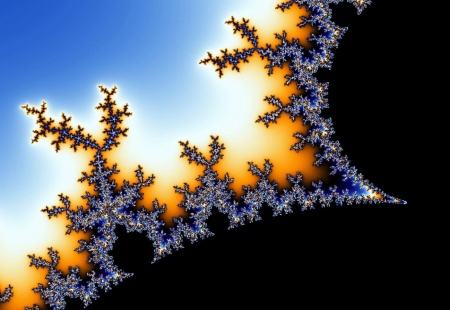Fractal: Difference between revisions
Jump to navigation
Jump to search
Amwelladmin (talk | contribs) No edit summary |
Amwelladmin (talk | contribs) No edit summary |
||
| Line 1: | Line 1: | ||
{{def|Fractal|/ˈfrakt(ə)l/|n|[[File:Fractal.jpg|450px|center|A [[fractal]] yesterday. Can you see the [[lawyer]] descending towards it in his extra-vehicular lander?]]}}A [[fractal]] is a geometrical figure, each part of which has the same statistical character as the whole. Fractals are useful in modelling structures (such as [[snowflake]]s<ref>I don’t think they mean ''that'' kind of [[snowflake]], Dad.</ref> | {{def|Fractal|/ˈfrakt(ə)l/|n|[[File:Fractal.jpg|450px|center|A [[fractal]] yesterday. Can you see the [[lawyer]] descending towards it in his extra-vehicular lander?]]}}A [[fractal]] is a geometrical figure, each part of which has the same statistical character as the whole. Fractals are useful in modelling structures (such as [[snowflake]]s)<ref>I don’t think they mean ''that'' kind of [[snowflake]], Dad.</ref> in which the same patterns recur at progressively smaller scales, and in describing partly random or chaotic phenomena such as crystal growth and galaxy formation. also useful in describing the [[risk]]s implicit in a given legal [[contract]]. The more [[Anal paradox|powerful]] the lens with which you look at it, the more risk you will see. | ||
{{sa}} | {{sa}} | ||
Revision as of 12:26, 16 April 2021

|
Fractal /ˈfrakt(ə)l/ (n.)
A fractal is a geometrical figure, each part of which has the same statistical character as the whole. Fractals are useful in modelling structures (such as snowflakes)[1] in which the same patterns recur at progressively smaller scales, and in describing partly random or chaotic phenomena such as crystal growth and galaxy formation. also useful in describing the risks implicit in a given legal contract. The more powerful the lens with which you look at it, the more risk you will see.
